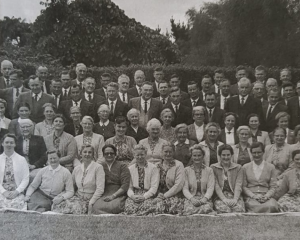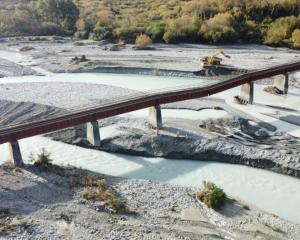
As of this morning, the landmark drilling project at Whataroa Valley, north of Franz Josef Glacier, had reached a depth of about 490m and had encountered temperatures of more than 60C.
The multi-national project, which has a goal of drilling 1.3km into the earth, would ultimately allow scientists to install monitoring equipment into the fault, where small earthquakes, temperature, pressure and chemical conditions could be studied.
By comparing rocks retrieved by drilling with rocks exposed at the surface, the research team hope to discover how the earth's crust deformed during earthquakes.
The project would be one of the first attempts to probe the inside of a major fault before it ruptures, and would give important insights into the chemical and physical changes occurring at various depths inside the fault zone.
One of the project leaders, Dr John Townend of Victoria University, told the Herald the temperatures of rock and fluid recorded so far had been higher than expected.
"This has technical implications, as we will need to ensure our equipment can withstand those temperatures, but also some really important scientific implications," he said.
"We are very interested in the conditions under which earthquakes occur. Basically, if rocks get too hot, the earthquake activity stops."
At eight to 10km below the alps, earthquakes stopped occurring because rock at that depth stopped snapping against itself, and instead tended to flow like putty.
"So understanding the thermal structure of the fault is quite important for understanding how deep seismicity might go in future big quakes, and at this point we are making a lot of measurements."
At previous borehole drills, the temperatures tended to rise by about 62C per kilometre drilled.
"What we have found here is that we are already at that, but with only a 400m depth, so we can see it's that much hotter."
However, the team did not expect that temperature rate to continue.
Dr Townend said despite a delay in drilling, the project had made good progress and in just a few days had burrowed through 100m of earth.
"At some point, when we think we are getting near the interesting bit, we will switch over to a different mode of drilling.
"That will generate core, which will provide a humongous amount of extra detail, because we will have the whole rock to look at."
The team had expected to pass through the fault at some point this month.
The borehole location was regarded by scientists as one of the best sites in the world to study the inner workings of a major plate boundary fault.
In parallel with the drilling operations, the science team has set up a sophisticated field laboratory for processing and analysing rock and fluid samples and digital data from the borehole.
The laboratory equipment included a mass spectrometer and gas chromatograph used to provide continuous measurements of gas chemistry and a core scanner that produces high-resolution images of core samples.
There was also an on-site facility to make microscopic slides of the rocks gathered within only a few hours of them having been ground up by the drill bit hundreds of metres below the surface.
The project is being jointly led by GNS Science, Victoria University of Wellington, and the University of Otago and is funded mainly by the International Continental Scientific Drilling Program, the Marsden Fund of the Royal Society of New Zealand, and the participating scientists' own organisations.
It involves scientists from New Zealand organisations and from more than a dozen other countries.
The Alpine Fault
*Is the on-land boundary between the Pacific and Australian tectonic plates.
*It moves about 27 metres horizontally every 1000 years, in three or four separate large ruptures.
*Scientists have evidence that it has ruptured 24 times in the past 8000 years, with the average interval period about 330 years.
*It last ruptured in 1717, or 297 years ago, and has a 28 percent probability of rupturing in the next 50 years, which is high by global standards.
*According to GNS Science, this rupture would produce "one of the biggest earthquakes since European settlement of New Zealand", and will have "a major impact on the lives of many people".
By Jamie Morton of the NZ Herald












